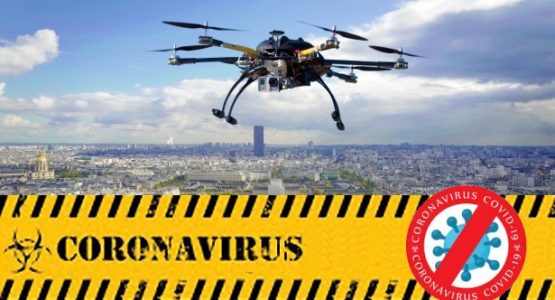Drones, robots and other technologies are being deployed in the fight against COVID-19 virus, introducing fresh challenges, opportunities, and risks.
Here are the best areas where drones and robots have been a key tool in responding to COVID-19:
Drones
In Spain, police are using drones to inform people to stay at home. Spain has declared a state of emergency and ordered citizens to stay indoors, apart from necessary trips, after reporting a quick rise in corona virus cases. Spain news agency footage shows deserted Madrid streets policed by drones. The drones are managed by humans who replay alerts through them via radio.
Similarly, in China drones were deployed to watch crowds and help manage traffic. People not wearing masks in public could be identified, and the drones were capable to broadcast detail to bigger areas than regular loudspeakers. They also used thermal imaging to identifying people with high body temperatures and were used to spray disinfectant in public places.
Sterilization robots
Danish company UVD Robots shipped robots to hospitals of China to disinfect rooms, and when completely deployed, the robots will work in all Chinese provinces. These robots emit an ultraviolet light all through an area to kill bacteria and viruses without exposing any human personnel to infection. These bots are remotely managed by a health employees who remains a safe distance away. Since there are 1000s of deaths each year attributed to hospital-acquired infections, automation to stop diseases is a best way for robots.
Youibot, another Chinese robot producer, created a sterilization robot in just fourteen days based on the demand from the marketplace.
Speedy delivery
Autonomous robots are becoming more ordinary in hospital atmosphere, where they can be used to deliver supplies all through the facility. The pandemic presents even more reasons to use mobile robots for the secure distribution of hospital materials in quarantine zones.
During the crisis, drones have been deployed to enforce curfews and offer security surveillance, rising sales of the robotic gadgets to government agencies. In the little term, to enforce quarantine mandates, governments will need to raise their security apparatuses, as well as the productivity of their medical agencies.
Telemedicine and to provide treatment and care
COVID-19 is taxing healthcare systems and medical experts in every country it spreads to. Telemedicine, supported by robots, makes it easy for medical experts to communicate with patients easily, keeping time and permitting possibly infectious patients to stay confined. Not only can robots communicate with individuals quarantine due to cronavirus, but they can also get important patient information and help doctors treat patients. At the Wuchang field hospital, a ward was staffed with 5G-run robots to not just help alleviate the strain on human personnel but to contain the contagion.
With bigger social acceptance of technological solutions’ outcome in decreased focus to low-cost approaches to containment, like environmental cleanliness and hand washing?
Corporate decision makers, policymakers, and communities will need to address these and many other questions after the infection has been suppressed.



